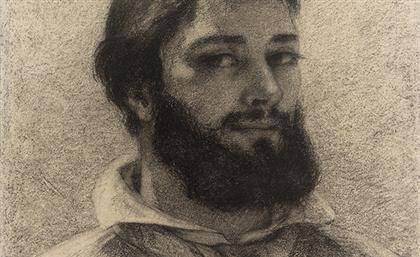
Gustave Courbet (1819–1877), Self-portrait (detail).
Black chalk and charcoal, 1852.
French portrait drawings at the British Museum ‘French portrait drawings from Clouet to Courbet’ showcases the British Museum’s remarkable holdings of French portrait drawings. 8 September 2016 – 29 January 2017,]]>
Source: British Museum
The exhibition will open with drawings by Francois Clouet, which offer an intimate picture of the 16th century French Renaissance court, and close with Toulouse Lautrec’s vivid portraits of the Parisian demi-monde. Clouet’s drawn portraits of courtiers and the royal family were commissioned by the French queen Catherine de’Medici, and his portrait of Catherine herself will be on display for the first time. The exhibition also includes a drawing of Catherine’s husband Henri II, one of the first representations of Henri as king, which formed the basis of his royal iconography.
Other portraits made in chalk or watercolour in the 18th and 19th century offer a uniquely personal glimpse into artists’ personal lives. Jean-Michel Moreau le Jeune used chalk to draw his infant daughter, in about 1772, creating a delightfully naturalistic record of childhood. The piece demonstrates how the drawn portrait allowed for a degree of familiarity and intimacy than that which had been common in portrait paintings from the same period. Another example of family portraiture is by the lesser known 19th-century artist Albert Lebourg, depicting his wife and mother in-law in smoky atmospheric black chalk. His velvety technique gives the impression of soft forms looming out of the darkness. The evocation of the candlelight and the unusual position of the sitters side by side shows the great intimacy that can be achieved through portrait drawing and experimentation with the medium.
Related content
Picasso Prints: The Vollard Suite at the British Museum (exhibition, 2012)
Follow us on:


